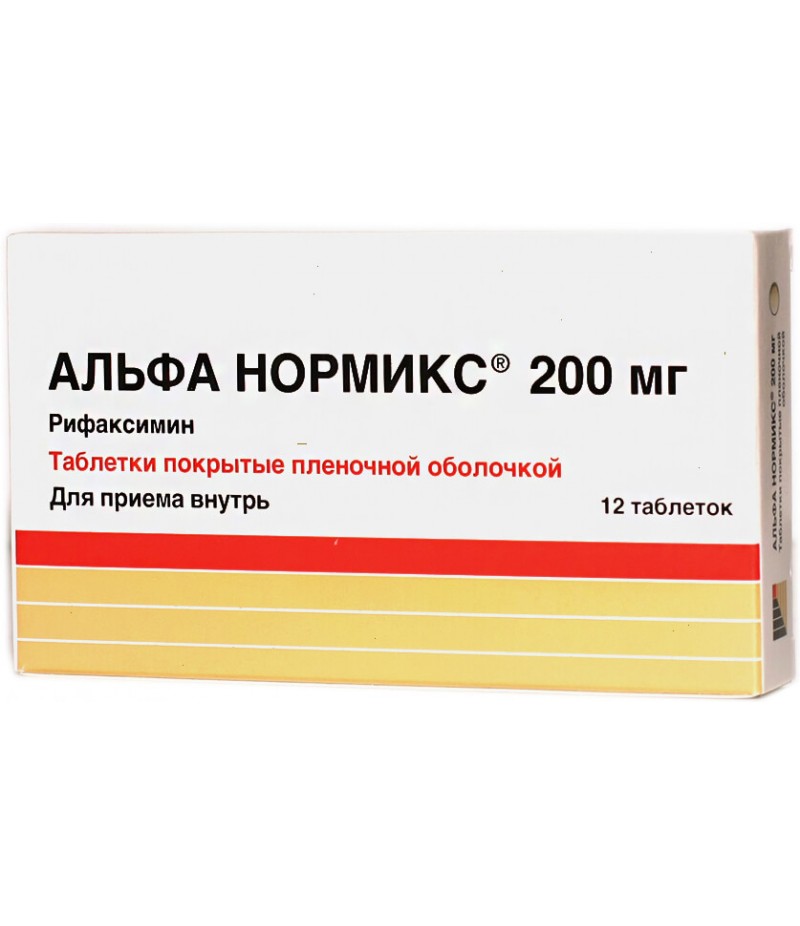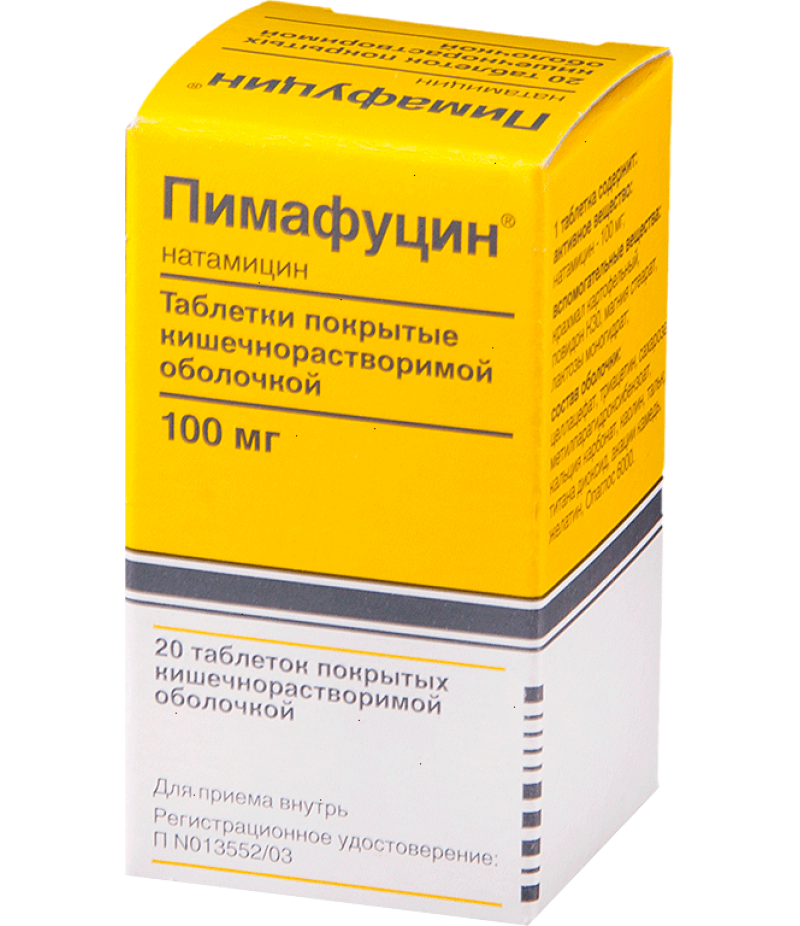Alfa Normix tabs 200mg #12
- $34.96
- 3 or more $33.50
- Availability:In Stock
Alfa Normix instruction for useYou can buy Alfa Normix on this pageCompositionThe composition of 1 tablet includes 200 mg of rifaximin active ingredient + additional substances (sodium carboxymethyl s
Tags: tabs
Alfa Normix instruction for use
You can buy Alfa Normix on this page
Composition
The composition of 1 tablet includes 200 mg of rifaximin active ingredient + additional substances (sodium carboxymethyl starch, microcrystalline cellulose, glycerol palmitostearate, colloidal silicon dioxide, talc, hypromellose, E172, titanium dioxide, disodium edetate, propylene glycol).
On 5 ml of the prepared suspension of the drug, 100 mg of rifaximin + additional ingredients (carmellose sodium, kaolin, sodium benzoate, "wild cherry" flavor, microcrystalline cellulose, pectin, sodium saccharinate, sucrose).
Form of issue
The medicine is released in the form of round convex pink tablets, coated with a shell. For 12 pieces in a blister, one or three blisters in a package.
Also, the agent is sold in the form of orange granules for the preparation of a suspension. Suspension has a characteristic smell and taste of cherries. In bottles of dark glass to 5 ml, the kit includes a measuring cup.
pharmachologic effect
The spectrum of antibiotic action is wide.
Pharmacodynamics and pharmacokinetics
The preparation contains the active substance in alpha form. This is an antibiotic belonging to the rifampicin group. The active substance has the property of binding the beta subunits of the DNA-dependent enzyme of bacteria, so rifaximin inhibits the synthesis of RNA and proteins in bacterial cells. This process is irreversible, the bacterium perishes.
The agent is sensitive to a variety of gram-positive and gram-negative bacteria.
In the intestine, the antibiotic is not absorbed and does not enter the systemic bloodstream, in this connection the substance acts only on the microflora of the intestine and significantly reduces the level of the pathogenic intestinal bacterial flora. In this case, the antibiotic rarely causes serious adverse reactions.
The drug reduces:
the amount of ammonia and other metabolic products;
the number of bacteria present in the diverticula of the colon, thus reducing inflammation around the diverticulum sac, eliminating symptoms and reducing the risk of complications in diverticular disease;
proliferation of microorganisms (if it is increased because of the syndrome of excess bacterial growth in the intestine);
a specific antigenic stimulus that can initiate and maintain chronic inflammation in the intestine;
the risk of complications of an infectious nature that occurs after or during a colorectal surgeon. operations.
Through the gastric mucosa less than one percent of the antibiotic is absorbed. In the blood after the intake is not detected (sometimes present in small amounts). At a maximum daily dose of 0.8 g, reaches a peak of its concentration in the intestine for three hours. After found in the urine, but in an amount less than one percent.
Indications for use
Antibiotic prescribe for the treatment of infections that are sensitive to its effects, namely:
syndrome of excess bacterial growth in the intestine;
diverticular disease of the colon;
traveler's diarrhea;
acute infections in the LTR;
hepatic encephalopathy;
inflammation of the intestine (chronicle);
prevention of complications after surgical operations in the colorectal region.
Contraindications
Contraindications for taking tablets are:
all kinds of intestinal obstruction;
an ulcer of the intestine;
allergy to drug components.
Suspension is not prescribed if there is an allergy to the antibiotic or components in the composition.
Side effects
Side effects occur rarely. Of those observed during the study of the drug, most were symptoms of concomitant diseases: increased blood pressure, dizziness, palpitation, headache, distortion or loss of taste, dyspnea, rash, cold sweat, fever, diarrhea, heartburn, Quincke's edema.
The most likely occurrence of reactions from the digestive tract: nausea, pain in the epigastric region, vomiting. Most often, such reactions pass by themselves after a certain time after the start of the admission.
Alfa Normix, instructions for use (Method and dosage)
Alfa Normix in tablets
Tablets are taken orally, without separating or chewing. Dosage and duration of admission is determined by the attending physician.
Persons who have reached the age of 12 years are prescribed one tablet every 8 hours or two tablets every 12 hours. Treatment should not be longer than 7 days.
The course can be repeated no earlier than a month.
Instructions for use Alfa Normix in granules
To prepare the suspension, add water to the bottle (to the first mark), shake well and add water to the next mark. The required amount of the finished suspension is measured by means of a measuring cup.
The already prepared solution can be used for a week (with storage at room temperature). Before use, the suspension should be shaken.
For children over 12 years and adults, the dose per day is 600-1200 mg of antibiotic, which corresponds to the intake of 10-20 ml 2-3 times a day.
At the age of 6 to 12 years, the daily dose is 400-800 mg. Take 10-20 ml of the suspension 2 times a day.
For children 2-6 years, the daily dosage is 200-600 mg. Assign 5-10 ml 2-3 times a day.
The course does not exceed 7 days. Before taking this medication, consult your doctor.
Overdose
When taking less than 2400 mg of rifaximin per day, an overdose is not possible.
In case of taking doses much higher than recommended, you should wash the stomach, perform symptomatic therapy.
Interaction
Interaction with other agents is unlikely in connection with the fact that the drug does not enter the systemic bloodstream.
Storage conditions
Tablets and granules should be stored in a cool place inaccessible to small children.
Shelf life
3 years. After preparation, the suspension can be stored in the refrigerator for 7 days.
special instructions
It is extremely rare, with damage to the intestinal mucosa, the possible entry of about one percent of the antibiotic into the systemic circulation. In this regard, it is possible to stain the urine in a reddish-orange color.
Reviews about Alfa Normix
The drug is good. Reviews about Alfa Normix, mostly positive. The medicine helps to cope not only with chronic bowel diseases, but also effectively as an emergency remedy. Many forget that after taking such strong antibiotics, it is worth to drink a course of probiotics to restore normal microflora in the intestine.
Do not engage in self-medication, the medicine should be taken under control and after consulting a doctor.


